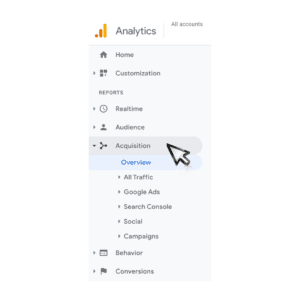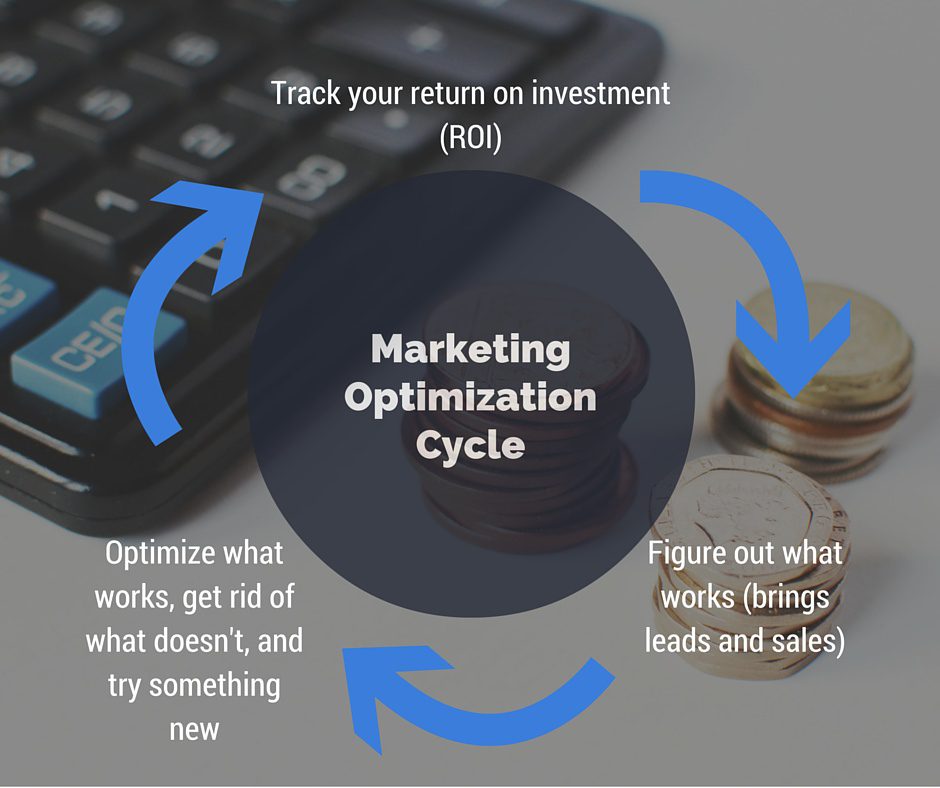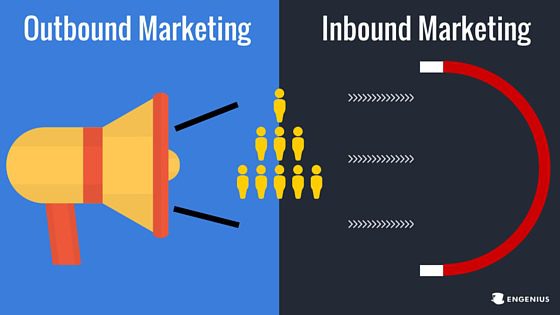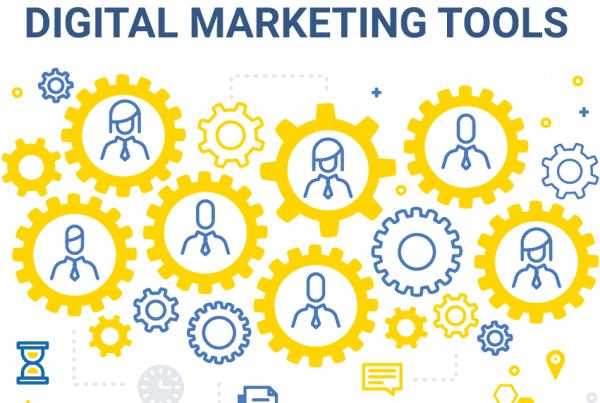Allocating marketing budgets is difficult.
Your company’s options are increasing every single day and, while 2020 and 2021 have shown the world that the future is digital, traditional marketing shouldn’t be forgotten. With traditional marketing spend, you can invest in billboards, direct mail, advertisements, sponsorships, and more. With digital marketing, you can invest in SEO, Search Ads, Facebook Ads, Instagram Ads, Email Marketing, and more.
So, how the heck can you make a decision and feel confident your marketing budget is benefitting your bottom line?
We’ll discuss 8 steps to help you initiate a wiser strategy for divvying up your marketing budget. (Or, you can skip this process entirely and talk to us about your goals!)
1. Keep your current marketing budget in mind, but don’t cling to it.
Sure, you know that not all marketing channels are created equal in cost and effectiveness. But if you’re like me, picking a monthly budget and finding a way to stay within it is comforting. Unfortunately, a simple reallocation of funds may mean missed opportunities.
So keep an open mind as you go through the following steps. It’ll help you choose an overall marketing budget that makes sense for your wallet while also accomplishing your goals. (Plus, your overall budget has just as good a chance of decreasing as increasing.)
Also, before we get too far, make sure you have a good team in place. Find out what skills every great marketer needs to have, and how we would recommend you hire for your marketing department.
2. Audit your monthly marketing practices.

Google Analytics is an excellent source of data.
What marketing practices do you use each month? Be sure to investigate and document each avenue you’re currently using to get the word out about your business. For each, investigate and document (an Excel spreadsheet should do fine) the cost, the characteristics and number of people you intend to reach, and the amount of time spent managing (if you’re managing it in-house).
If you feel some things are missing after you’ve made a cursory list, ask everyone else in your company about marketing activities. How many hours per week does your admin assistant really spend promoting your business on Facebook? How many fliers are you really mailing? How many digital or physical events are your salespeople really attending?
Once you’ve mapped out your State of Marketing, try to determine how many leads each channel has produced for your company. Leads do not necessarily mean sales, of course. We’ll get to that in the next step. Leads are people who have intentionally (inbound leads) or unintentionally (outbound leads) been exposed to your marketing materials.
A note about websites: while a website is definitely a marketing tool, for our purposes, think of your website as a second lobby; i.e. a place your leads go once you’ve piqued their interest! If you’ve set up Google Analytics for your website, you can use it to help you determine the number of leads you’re getting through your marketing efforts. Hopefully, you’ve got solid marketing reporting practices.
3. Calculate your lead to conversion rate as well as you can.
For this step, take note of how many conversions (sales) your company has had each month and compare that to the number of leads you believe you generated with your marketing activities. This will give you a rough idea of your lead to conversion rate.
The tough thing about traditional marketing has historically been determining ROI. How many people really read that ad in the free magazine? Of that number, how many people heavily considered choosing your services but never made a purchase?
Even if your traditional marketing efforts are giving you a return on your investment, the ROI of digital advertising (paid) and organic digital marketing (free) is much easier to assess. Because of this, you can rest assured that however much you wind up investing in digital marketing, subsequent audits should give you enough information to refine your digital efforts even further.
Be sure to check out average conversion rates for your industry, so that you can compare and keep it in mind moving forward.
4. Think about leads.
As I mentioned above, in today’s marketing world there are generally two kinds of leads: Those that are seeking you out (inbound) and those you accost—okay, okay, politely interrupt—as they listen to the radio or watch TV (outbound).
As you might expect, inbound leads are way more likely to buy than outbound leads. Yet traditional methods of marketing are often (though not always) outbound in nature—and very expensive. Which kinds of leads are you spending your marketing budget on?
Digital marketing has opened up a new channel for outbound marketing here and there, but it is especially conducive to inbound marketing! The core to inbound marketing is being where a potential customer might be looking for something related to what your company can offer. In the digital era, those places overwhelmingly include:
- Internet Searches (1st Page of Results)
- Social Media
- Your Website and Blog
- Email Subscriptions
If the conversion rate you calculated in Step 3 is very low, changing your budget in favor of digital marketing—with an emphasis on attracting those inbound leads—could do your business a world of good.
5. Determine how many marketing leads you’ll need.
To help illustrate steps 5-8, meet T-Co., a fictional provider of specialty building material kits, including their flagship product, a customizable “Rough Cut Lumber Porch Kit.”
T-Co. utilizes only traditional marketing methods to connect with new clients (mostly builders) and make sales. Once T-Co. connects with a builder, they usually maintain a longstanding relationship; however, T-Co. also wants to begin selling its materials directly to homeowners due to a recent increase in DIY renovation projects. Their ultimate goal is to sell 175 kits per month between both target audiences, up from a current sales number of 75 per month.
Your current conversion rate is not set in stone—the goal of this series is to make it increase!—but it will still come in handy. Using your conversion rate, determine how many leads you need to attract to get the number of monthly sales you want.
Here’s an example from a marketing activity T-Co. already does: catalog mailers. T-Co.’s Marketing Director, Wendy, hires outside graphic design, writing, and printing services to create a monthly mailer that goes out to builders throughout the region. Because Wendy speaks to new contacts about how they found out about T-Co., Wendy can estimate with a fair amount of accuracy that the mailer, which goes out to 2,250 builders per month, is responsible for about 750 website visits and calls per month (leads), which end in 75 unique sales per month, an impressive lead-to-conversion rate of 10%. The mailer currently costs $6,000 per month.
Using the mailer’s 10% conversion rate, to drive 100 additional sales per month, Wendy will have to increase the mailer’s output accordingly. However, the mailer has never been geared towards homeowners, nor does T-Co. have a list of residential addresses.
Now, here’s an example from a digital marketing practice T-Co. is thinking about implementing: Social Media Marketing (SMM). Wendy has determined that to reach individuals interested in home projects, T-Co. should consider placing ads on Facebook or Pinterest, since that’s where her target audience is active. Plus, she can target individuals who own homes and show interest in DIY projects. Using a general conversion rate of 4%, Wendy determines that social media ads will need to produce 2500 leads to meet her sales goal of 100 purchases per month.
6. How expensive are leads?
Once you have estimated how many leads you need to reach your sales goals, then it’s time to assess the potential cost and ROI of each.

For T-Co., a video series showcasing their products attracts inbound leads and complements social media advertising.
During this step, T-Co. calculated that increasing mailer activity according to the new goals would lead to a total spend of $12,000/month (an increase of only $6,000 due to bulk ordering rates), but that this increase would only lead to a gain in B2B clients.
To pursue new homeowner clientele via digital marketing, Wendy consulted with a marketing agency about what it would cost to attract 2500 new leads each month. The marketing agency suggested starting with a monthly SMM budget, which includes the cost of ads and the cost of professional management, of $12,500/month. In addition to ads, the digital marketing agency suggested a how-to video series at a one-time cost of $12,000. The idea would be to attract inbound leads, potential customers actively searching for a product like T-Co.’s.
Learn about cost per lead, and two other key marketing metrics.
7. Choose channels for max marketing ROI. (Sounds simple enough.)
You’ve made it so far into this process (or at least into this blog post, which is a feat in itself)! Now for the toughest part: making a decision based on what you’ve learned.
There may be more than one possibility for reframing your marketing strategy and practices. As a savvy businesswoman or man, you know there is no guaranteed success formula, but now you have valuable information you can use to move your marketing up to the next level.
What do you think T-Co. decided to do? Because T-Co.’s average kit costs $2,000, meeting a sales goal of 175 per month would make pursuing both the mailer and the social media marketing campaigns feasible ($24,500 would be exactly 7% of their gross revenue), but the video series—and the inbound leads— would be out of reach; plus, it would put a strain on their finances in the short term.
After discussing their options as a team and with the marketing agency, T-Co. decided to only slightly increase their current mailer circulation and to invest in the full Social Media Marketing campaign. They also decided to purchase the video series but decided to spread out filming and payments over six months.
Their efforts will help both in the short term, generating awareness, and the long term: using a new lead capture form on their website, T-Co. and Wendy will be able to gather information from website visitors interested in staying in touch, further capitalizing on the excellent ongoing relationship T-Co. has with builders and homeowners alike.
8. Track ROI, rinse, and repeat!

Depending on your marketing platform, reevaluate every three months to one year.
As you implement your plan, track the big three: leads, sales, and cost per sale. You and your marketing provider will most likely need to work together closely to form a complete picture. In time, you’ll be able to see what’s working, particularly from where you are attracting the most inbound leads (See Step 4). Then, you can make adjustments accordingly, further optimizing your marketing efforts and getting the most out of your work, whether it’s old school, new school, or a combination of both.
Looking for more digital marketing help?
- Check out the best digital marketing tools for optimizing marketing efforts.
- Discover why marketing experimentation is vital for your company’s growth.
- If you’re in Greenville, SC, get in touch with our digital marketing company
Start the Conversation
Interested in learning what digital marketing methods are best for your company?




